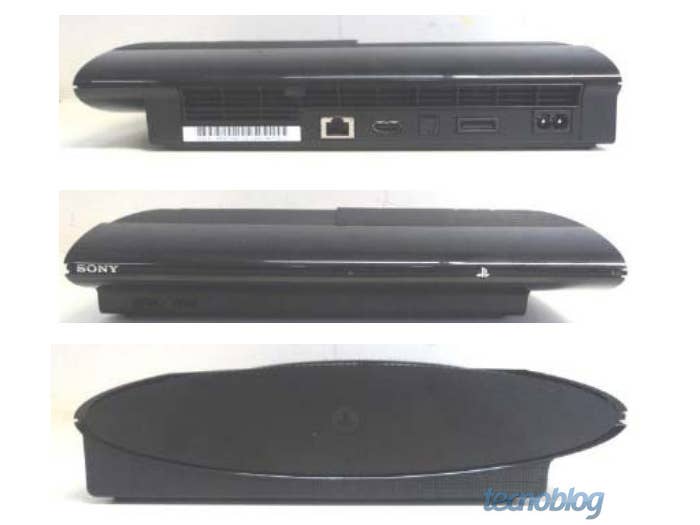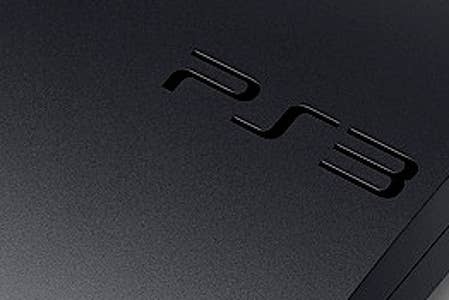Tech Focus: Can Sony Make a £99 PlayStation 3?
Digital Foundry breaks down the challenges facing Sony with its upcoming console revision
Good news, bad news. According to a recent report from VG247, the latest revision of the PlayStation 3 could well be released at a surprisingly price-point - £99 is being suggested, somewhat optimistically - but the platform holder won't reveal the new console at Gamescom, looking instead to sell-through more of its existing inventory. Our sources corroborate the Cologne no-show and while the entry-level 16GB model will be "aggressively priced", we have no confirmation on just how low that price-point will be.
The upcoming CECH-4000 model is definitely a very big deal for Sony however, representing the company's best chance to grab current-gen market share before more the technologically advanced replacements arrive next year. More than any other PlayStation 3 model released to date, this revision is all about getting as many boxes in homes as possible, and based on leaked photography from Brazil's equivalent of the FCC, we have a pretty good idea of what Sony has done to get its build costs down to a minimum.
"The new model introduces a number of new cost-cutting measures, but it's the move towards flash memory for the entry-level unit that offers the most potential for a meaningful price-cut."
Superficially, overall size issues aside, the most obvious change to the core PlayStation 3 design comes from a top-loading Blu-ray drive, replacing the more expensive slot-loader we've seen in all PS3s to date. Curiously, the lid appears to be raised vertically in relation to the rest of the top elevation, suggesting that perhaps it slides across the face of the unit, rather than popping up. Other than that, the basic hardware make-up looks to be much the same as the existing Slim: dual USB ports remain (Sony couldn't really cut-down any further here) while the reverse of the unit retains the multi-AV port, HDMI socket, Ethernet and Toslink digital audio outputs.
A look at the power supply rating offers us our first hints of what may - or may not - have changed within the console: Sony has reduced the load it is capable of down to 190W from the current Slim's 200W. That's a very meaty PSU bearing in mind that the launch version of the Slim - which has since been made much more efficient - only drew a maximum of 105W when I first tested it back in 2009. It also suggests that the core of the PS3's components hasn't changed that much from the existing Slim, which currently uses a 45nm Cell CPU combined with a 40nm RSX graphics core. Combining both chips into one - as Microsoft has done with the Xbox 360S - or dropping either component down to a lower fabrication node would surely have brought about more comprehensive power-savings, allowing Sony to incorporate a smaller, cheaper PSU into the new machine.
However, the various interconnects between PS3's two types of RAM, and the complexity of Cell itself makes integrating GPU and CPU into one part immensely challenging, and while a 32nm shrink for the main processor could be achieved, there appears to have been some uncertainty if it would happen at all. For RSX, the next logical shrink is down from 40nm to 28nm, but with production on the lower process still ramping up, right now it's probably more cost-efficient for Sony to stay where it is.
So far, what we seem to be looking at is a machine that rolls up all the gradual changes Sony has made to the Slim since its 2009 debut, but with only superficial changes to the chassis, offering limited cost-savings. So it's safe to say that the notion of a £99 PlayStation 3 doesn't really add up at this point. However, the most fundamental difference comes from revisions to the attached storage. According to the leaked documentation, three different SKUs are in the offing: 16GB, 250GB and 500GB. To begin with, many thought that the 16GB option was a typo, and that the entry-level PS3 CECH-4000 would be a 160GB model that's more in line with the current offerings on the market.


However, Sony's strategy here is to mitigate its losses on mechanical hard drives - which have seen prices double since the Thailand floods which wiped out HDD production volume last year - by replacing them with flash memory. In a world where branded 16GB USB flash drives cost around £7, the potential for cost savings here is enormous, especially when 160GB HDDs aren't actually that much cheaper than the 250GB and 500GB units. This is where the lion's share of the savings originates from, and it's a masterstroke from Sony, creating the perfect entry-level offering for those interested in light gaming and media streaming from NetFlix, Lovefilm etc, with just enough storage for handling a few playable demos and the odd game.
Sony's leaked documentation confirms that the entry-level unit is identical to its stablemates still using mechanical hard drives, so if the 16GB of flash is too constrictive, there's no reason why the user can't simply add a hard drive in their own time. For the more committed gamer, such an upgrade would be inevitable sooner or later. Factoring in the PS3's use of mandatory game installs, which sometimes even reach 8GB, combined with the requirement for a cache for games (our guess would be that this would be around 1.5GB to 2GB of space unusable to the owner), the lack of storage could be a real issue.
"Sony is in an excellent position to reduce costs and increase value with free games via a bundled PlayStation Plus subscription, but Xbox 360 is the console more likely to breach the £99 price barrier."
Questions remain over how the 16GB flash has been implemented in the new machine. Microsoft's approach is simple - for its 4GB model, the chip is mounted directly onto the motherboard. Sony could follow the same approach, or it could simply source 16GB drives that link directly to the existing SATA port for the hard drive. There are plus and minus points for both approaches, but I would hope that Sony opts for the former, at the same time opening up the system completely for installing games onto attached media, as Microsoft did with its own USB storage update. Hacked PS3s already do something very similar, and there's no reason why it couldn't be achieved in a secure manner officially - there could also be performance benefits for many games by allowing them to run from flash media, or at least hosting install content there.
Clearly, the changes brought about the CECH-4000 revision could extend beyond just the inevitable price-cuts, but can Sony truly afford a £99/$150 entry-level price-point? Looking at the bare figures, it seems unlikely. To kick off, £99 and $150 may be equivalents in exchange rate terms but in the real world, things are very different - mostly because a UK retail price includes 20 per cent VAT, whereas a US MSRP doesn't factor in sales tax. To put things into perspective, we would be looking at Sony manufacturing, packaging and shipping the new PS3, and offering retail some kind of profit margin at a base cost of £83 before VAT is added. This stretches credibility somewhat: there's little evidence that the new model features the smaller, cooler CPU or graphics core that would be required in order to significantly cut costs.
However, looking at the price of the 4GB Xbox 360, it's clear that a budget-orientated SKU can be sold at a very cheap price: recommended retail price for this unit is £139.99, but a quick look at Amazon price history demonstrates that prices fluctuate considerably - in May, it was available for £115, and just a couple of weeks ago, the unit could be bought from UK online retailer Zavvi for around £113.
In the short term at least, matching the existing Xbox 360 price-point with a higher value offering (more storage, Blu-ray) makes sense, leaving room for retailers to fight it out in the race to the bottom, if they should so choose. Sony can also introduce extra value by bundling in something along the lines of a three-month PlayStation Plus subscription - a zero cost in terms of physical goods, and effectively offering newcomers to PlayStation 3 an impressive range of discounts and actual free games. Again, this is something that Microsoft is unlikely to offer.
However, in the race to the bottom, it's the Xbox 360 that is best equipped to reach a £99 price-point sooner. DVD drives remain cheaper than Blu-ray, and in creating the 360S, Microsoft already did all the hard work in shrinking down the major components: CPU and GPU are already in one package at 45nm and a 32nm process reduction seems feasible. In the most basic terms, the 360 is significantly less complex design than the PS3. With selected retailers already in the habit of knocking as much as £25 off the entry-level RRP when it suits them, it's surely only a matter of when - not if - the Xbox 360 crosses the £99 threshold.

